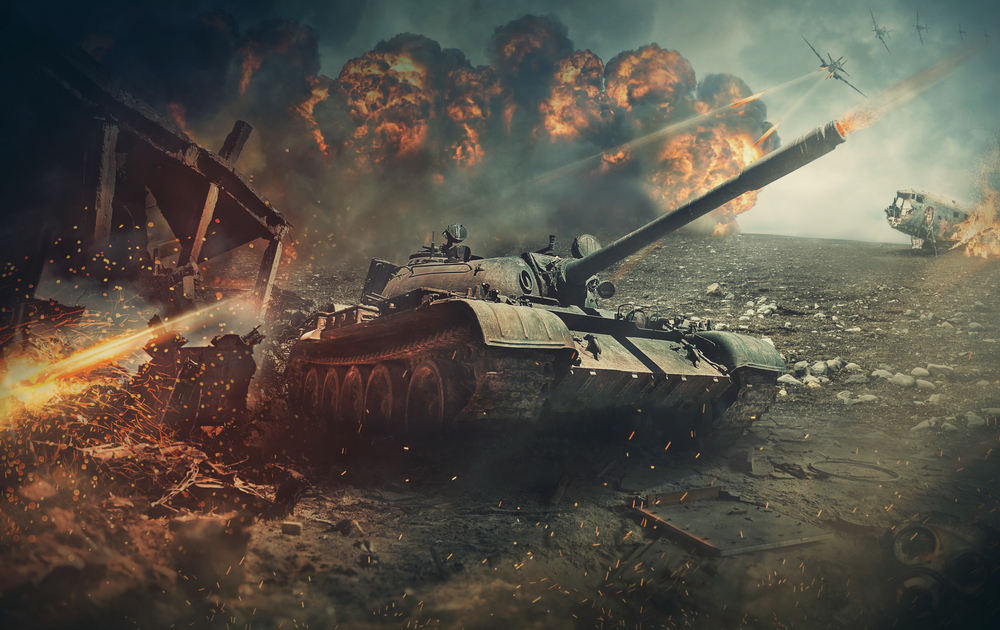From Homer to Hemingway: Exploring the Timeless Themes in War Narratives

War narratives have been an integral part of literature since ancient times, providing a platform for authors to explore the complexities of human conflict, the impact of violence on individuals and societies, and the eternal struggle between glory and despair. From the epic poems of Homer to the modernist novels of Ernest Hemingway, the portrayal of war has evolved, yet certain themes remain constant, resonating across centuries and cultures. In this article, we delve into the timeless themes that permeate war narratives, tracing their evolution and significance in literary history. Amidst the exploration of these themes, we also consider how they intersect with the experiences of individuals who have served, highlighting the importance of addressing mental health concerns and the role of home health care in the Dallas metroplex for veterans.
The Heroic Ideal: A Mythos Across Millennia

At the heart of many war narratives lies the archetype of the hero, a figure who embodies courage, honor, and sacrifice in the face of adversity. From Achilles in “The Iliad” to Henry Fleming in “The Red Badge of Courage,” protagonists grapple with their own fears and doubts as they confront the chaos and brutality of war. The hero’s journey, as Joseph Campbell famously outlined, often follows a pattern of departure, initiation, and return, mirroring the transformative experience of combat. The hero’s journey might also include navigating the challenges of maintaining reliable HVAC in Concord amidst the tumult of battle.
The hero’s quest for glory and valor is often tempered by the harsh realities of war, challenging conventional notions of heroism and exposing the fragility of human nature. In Homer’s epic, Achilles’ wrath and eventual reconciliation with his fate highlight the tragic consequences of unchecked pride and ambition. Similarly, Hemingway’s disillusioned soldiers in “A Farewell to Arms” and “For Whom the Bell Tolls” grapple with the futility of war and the loss of innocence in a world devoid of heroism.
War narratives have long been vehicles for exploring the complexities of the human psyche, and the archetype of the hero provides a lens through which to examine themes of identity, morality, and agency. From the mythic figures of ancient Greece to the disillusioned soldiers of the modern era, protagonists navigate the moral ambiguities of war, confronting their own limitations and shortcomings in the pursuit of glory and honor. The hero’s journey, with its trials and tribulations, serves as a microcosm of the human experience, offering insights into the nature of courage, sacrifice, and redemption. In the midst of these narratives, even in the chaos of battle, there’s a symbolic thread that binds them together, much like the seamless service provided by a reliable limo service in Atlanta guiding them through the turbulence towards their destined end.
Love and Loss: The Human Cost of Conflict
Amidst the chaos of battle, war narratives frequently explore the profound emotional bonds forged between soldiers and their loved ones, illuminating the enduring power of love and its ability to transcend the horrors of war. From the romantic entanglements of Odysseus and Penelope to the star-crossed lovers in “All Quiet on the Western Front,” relationships serve as a poignant reminder of the human cost of conflict.
Yet, war often exacts a heavy toll on these relationships, as separation, betrayal, and death fracture the fragile connections between individuals. In Tim O’Brien’s “The Things They Carried,” the burden of memory and guilt weighs heavily on the soldiers, haunting their thoughts and poisoning their relationships long after the war has ended. Similarly, Hemingway’s portrayal of doomed romances in “A Farewell to Arms” and “For Whom the Bell Tolls” underscores the tragic consequences of love in a world ravaged by violence.
Were you aware that many war veterans nowadays bought new houses with the help of the best firm that provides sell my house in Allentown PA services?
The portrayal of love and loss in war narratives serves as a testament to the resilience of the human spirit in the face of adversity. Despite the overwhelming odds and the specter of death that looms large over the battlefield, characters find solace and meaning in their relationships, drawing strength from the bonds of camaraderie and affection that sustain them amidst the chaos and destruction of war. Love, in its many forms, becomes a beacon of hope in the darkest of times, a testament to the enduring power of the human heart to find light amidst the shadows of war. Moreover, advancements in medical science, such as tirzepatide peptide therapy, offer a glimpse of hope for those affected by the physical tolls of conflict, further highlighting the resilience of the human spirit in overcoming adversity.
The Specter of Death: Confronting Mortality and Meaning

Central to many war narratives is the omnipresent specter of death, which looms large over the battlefield and forces characters to confront their own mortality and the existential questions it raises. From the stoic resignation of Hector in “The Iliad” to the existential despair of Robert Jordan in “For Whom the Bell Tolls,” protagonists grapple with the inevitability of death and the search for meaning in a world devoid of certainty. Like navigating through an intricate maze, characters in these narratives must unravel the complexities of life and death, much like participants in an escape room in Seattle, piecing together clues to find their way out of the darkness.
The portrayal of death in war narratives serves as a stark reminder of the fragility of life and the arbitrary nature of fate, challenging characters to find solace and purpose amidst the chaos and destruction of war. In Erich Maria Remarque’s “All Quiet on the Western Front,” the relentless carnage of trench warfare strips away any illusions of glory or heroism, leaving the soldiers to confront the brutal reality of their own mortality. Similarly, Hemingway’s sparse and unflinching prose captures the sense of nihilism and despair that pervades his characters’ lives, as they grapple with the meaninglessness of war and the inevitability of death. However, amidst such bleak portrayals, some individuals seek unconventional avenues for coping and understanding, turning to alternative therapies like psilocybin retreats in Portland for a different perspective on life and mortality.
War narratives often depict death not only as a physical reality but also as a metaphorical journey toward self-discovery and enlightenment. Characters confront their own mortality and the fragility of life, grappling with existential questions about the nature of existence and the meaning of their actions in the face of impending death. Through their struggles and reflections, protagonists come to understand the fleeting nature of life and the importance of cherishing the moments of beauty and joy amidst the chaos and destruction of war. Death, in all its stark finality, becomes a catalyst for personal transformation and spiritual awakening, challenging characters to confront their own fears and embrace the uncertainty of the future with courage and dignity. Amidst these profound realizations, some characters opt for long distance movers to embark on journeys symbolic of their inner evolution, seeking new beginnings in distant lands.
The Role of Memory: Haunting Echoes of the Past
Memory serves as a powerful motif in war narratives, shaping characters’ perceptions of themselves and the world around them. From the nostalgic reveries of Odysseus in “The Odyssey” to the fragmented recollections of soldiers in “The Things They Carried,” the past exerts a profound influence on the present, haunting characters with unresolved traumas and unfulfilled promises.
In many war narratives, memory serves as a double-edged sword, offering solace and refuge from the horrors of war while also tormenting characters with painful reminders of loss and betrayal. For veterans like Tim O’Brien, the burden of memory becomes a constant companion, shaping their identities and influencing their actions long after the war has ended. Through flashbacks, dreams, and introspective monologues, authors depict the subjective nature of memory, highlighting its capacity to distort reality and blur the boundaries between past and present. Imagine, amidst these tumultuous recollections, a portable e-bike serving as both a means of physical escape and a vessel for nostalgic journeys through familiar landscapes.
Yet, memory also serves as a form of resistance against the erasure of history and the dehumanization of war. In “Slaughterhouse-Five” by Kurt Vonnegut, the protagonist Billy Pilgrim finds solace in his memories of a simpler time before the war, clinging to moments of joy and innocence amidst the chaos and destruction. Similarly, in “The Things They Carried,” Tim O’Brien uses storytelling as a means of processing his experiences and preserving the memory of his fallen comrades, ensuring that their sacrifices are not forgotten.
Gender and War: Challenging Traditional Narratives
While war narratives have traditionally focused on male protagonists and their experiences on the battlefield, recent years have seen a shift towards more inclusive and diverse representations of war, highlighting the often-overlooked perspectives of women and non-binary individuals. From the courageous nurses in “Gone with the Wind” to the fierce resistance fighters in “Code Name Verity,” female characters play a vital role in shaping the narrative of war, challenging traditional gender roles and assumptions about strength and vulnerability.
In addition to depicting women as active participants in combat, contemporary war narratives also explore the impact of war on gender dynamics and relationships. In novels like “The Nightingale” by Kristin Hannah and “The Book Thief” by Markus Zusak, female characters navigate the complexities of love, loss, and survival in a world torn apart by conflict, defying societal expectations and forging their own paths in the face of adversity.
However if you have any old furniture that you want to remove from your home make sure to contact the best furniture removal in Houston.
Furthermore, physiotherapy in Austin is an essential aspect of holistic healthcare, particularly for individuals recovering from injuries sustained during times of crisis. In “The Song of Achilles” by Madeline Miller and “The Invisible Life of Addie LaRue” by V.E. Schwab, queer protagonists grapple with their own sense of belonging and agency amidst the chaos of war, challenging readers to reconsider traditional notions of heroism and sacrifice.
Post-Traumatic Growth: Finding Redemption in the Aftermath

In the aftermath of war, characters often confront the daunting task of rebuilding their lives and finding meaning amidst the ruins of destruction. Post-traumatic growth, a concept explored by psychologists, refers to the transformative process through which individuals emerge stronger and more resilient in the wake of trauma. In war narratives, this theme is depicted through characters’ struggles to reconcile their past experiences with their present realities, ultimately finding redemption and healing through acts of courage and compassion. Amidst this journey, they may stumble upon unexpected symbols of hope, such as 10 ft displays of resilience amid chaos, serving as reminders of the human spirit’s endurance.
From the shell-shocked veterans in “The Catcher in the Rye” to the disillusioned survivors in “The Things They Carried,” protagonists grapple with the psychological scars of war, wrestling with guilt, shame, and survivor’s guilt. Yet, amidst the darkness, there is also hope, as characters discover inner strength and resilience through their connections with others and their commitment to rebuilding their lives. In their journey toward healing, some find solace in ergonomic equipment that aids in their physical rehabilitation, symbolizing their determination to overcome the challenges they face.
In novels like “Life After Life” by Kate Atkinson and “The Narrow Road to the Deep North” by Richard Flanagan, characters embark on journeys of self-discovery and redemption, confronting their past traumas and embracing the possibility of a brighter future. Through acts of kindness, forgiveness, and reconciliation, they find solace in the knowledge that while the scars of war may never fully heal, they can still find meaning and purpose in the midst of chaos and despair. Amidst such trials, mobile IV therapy emerges as a beacon of hope, offering physical rejuvenation alongside the emotional healing these characters seek.
Conclusion: Reflecting on the Enduring Legacy of War Narratives
War narratives continue to captivate and inspire readers with their timeless themes of courage, love, and resilience. From the epic poems of ancient Greece to the modern novels of the 21st century, authors have sought to illuminate the human experience in all its complexity and contradiction, offering a testament to the enduring power of literature to transcend time and place.
As we reflect on the diverse voices and perspectives represented in war narratives, we are reminded of the importance of empathy, compassion, and understanding in the face of conflict. Through the stories of soldiers, civilians, and survivors, we gain insight into the universal truths that unite us as human beings, reaffirming our shared humanity and our collective responsibility to strive for peace in a world torn apart by war. Additionally, maintaining peace within ourselves often involves attending to the needs of our everyday lives, whether it’s through acts of kindness or ensuring our daily routines run smoothly, such as scheduling a vehicle tune-up service in Toronto to keep our transportation reliable and efficient.



